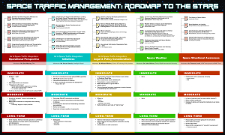Presentation Type
Paper (supporting PowerPoints may be added as Additional Files)
Location
Bass Auditorium
Start Date
26-2-2019 2:00 PM
Abstract
Recent advancements in deep learning (e.g. Convolutional Neural Networks (CNN), Recurrent Neural networks (RNN)) have demonstrated impressive results in many practical and theoretical fields (e.g. speech recognition, computer vision, robotics). Whereas deep learning methods are becoming ubiquitous, they have been barely explored in SSA applications, in particular with regard to object characterization for Space Traffic Management (STM).
In this paper, we report the results obtained in designing and training a set of CNNs and RNNs for Space Object (SO) classification and characterization using light-curve measurements. More specifically, we provide a comparison between deep networks trained on both physically-based models (i.e. reflectance models) and real light-curve data (data-driven approach). Physically-based models allow the generation of synthetic light-curves as function of the SO parameters (e.g. shape, size, material). Such models have the ability to yield a large number of training points which make them suitable to train deep networks. Nevertheless, they suffer from modeling errors. Conversely, real light-curve measurements can be employed to directly train CNNs and/or RNNs, yet with a relatively limited data set. Insight in how to design such networks and expected performances will be discussed to highlight the power of the proposed methodology. Additionally, a cluster analysis conducted via data dimensionality reductions coupled with unsupervised feature extractions for SO characterization will be presented.
Area of Interest
Space Situational Awareness
Included in
Space Objects Classification and Characterization via Deep Learning and Light Curves: Applications to Space Traffic Management
Bass Auditorium
Recent advancements in deep learning (e.g. Convolutional Neural Networks (CNN), Recurrent Neural networks (RNN)) have demonstrated impressive results in many practical and theoretical fields (e.g. speech recognition, computer vision, robotics). Whereas deep learning methods are becoming ubiquitous, they have been barely explored in SSA applications, in particular with regard to object characterization for Space Traffic Management (STM).
In this paper, we report the results obtained in designing and training a set of CNNs and RNNs for Space Object (SO) classification and characterization using light-curve measurements. More specifically, we provide a comparison between deep networks trained on both physically-based models (i.e. reflectance models) and real light-curve data (data-driven approach). Physically-based models allow the generation of synthetic light-curves as function of the SO parameters (e.g. shape, size, material). Such models have the ability to yield a large number of training points which make them suitable to train deep networks. Nevertheless, they suffer from modeling errors. Conversely, real light-curve measurements can be employed to directly train CNNs and/or RNNs, yet with a relatively limited data set. Insight in how to design such networks and expected performances will be discussed to highlight the power of the proposed methodology. Additionally, a cluster analysis conducted via data dimensionality reductions coupled with unsupervised feature extractions for SO characterization will be presented.



Comments
Visit the panel session Orbital Coordination: Part 1